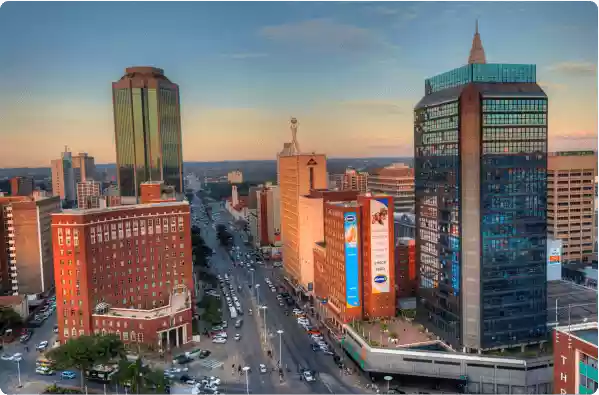100% Secure Payments
Tender Details
- Country: Ethiopia
- Summary: Consultancy to Undertake a Proof of Concept Work on Business Service Hubs for Climate Smart Dairy Farming in Oromia Forest Landscape Project (OFLP) Areas
- ETT Ref No: 51341921
- Deadline: 06 Apr 2021
- Competition: ICB
- Financier: World Bank (WB)
- Purchaser Ownership: -
- Tender Value: Refer Document
- Notice Type: Tender
- Document Ref. No.: 1273597
- Purchaser's Detail :
- Description :
- Expression of Interest are invited for Consultancy to Undertake a Proof of Concept Work on Business Service Hubs for Climate Smart Dairy Farming in Oromia Forest Landscape Project (OFLP) Areas. REQUEST FOR EXPRESSION OF INTEREST FOR SELECTION # 1273597 This Request for Expression of Interest is for a Firm Selection. Please log in as a valid Firm User if you wish to express interest in this selection. Selection Information Assignment Title Consultancy to Undertake a Proof of Concept Work on Business Service Hubs for Climate Smart Dairy Farming in Oromia Forest Landscape Project (OFLP) Areas Publication Date 17-Mar-2021 Expression of Interest Deadline 06-Apr-2021 at 11:59:59 PM (Eastern Time - Washington D.C.) Language of Notice English Selection Notice Assignment Country · ET - Ethiopia Funding Sources The World Bank Group intends to finance the assignment/services under: · TF0B4281 - Pilot Work on Climate Smart Dairy Production in Oromia Forest Landscape Project (OFLP) Areas · BB - BANK BUDGET Individual/Firm The consultant will be a firm. Assignment Description The objective of this technical assistance is to pilot the proof of concept and provide evidence of the commercial and environmental viability of the Business Service Dairy Hubs for Ethiopia. This entails to test 3 business models: i) Dairy service hubs, ii) Farmer extension support, and iii) Commercial fodder centers or similar. This technical assistance proposes to accelerate business development by providing: i) technical support / trainings / data management; ii) support to business plan development applicable for finance; iii) training to dairy processors to implement supply chain integration with a secured uptake, quality payment and payment structure for finance (linked to milk payment); and iv) linkage of the business formats to impact investors for bringing this to scale. Attachments · Optional TOR File Qualification Criteria · 1. Provide information showing that they are qualified in the field of the assignment. * · 2. Provide information on the technical and managerial capabilities of the firm. * · 3. Provide information on their core business and years in business. * · 4. Provide information on the qualifications of key staff. * TERMS OF REFERENCE Consultancy to Undertake a Proof of Concept Work on Business Service Hubs for Climate Smart Dairy Farming in Oromia Forest Landscape Project (OFLP) Areas Background Agriculture and livestock production represent the main economic activities in Ethiopia. Livestock is an integral part of agriculture, accounting for about 45 percent to the total value of agricultural production and supporting the livelihoods of a large share of the population. Ethiopia claims to house one of the largest livestock populations in Africa. Cattle contribute about 80 percent of the livestock value added. The dairy sector is seen as an important high-value growth sector in the process of agricultural and economic transformation with potential to provide good income opportunities for the poor. The Ethiopian population growth is anticipated to reach 190 million in 2050. With also rising incomes, the demand for animal food source will exponentially increase specially the urbanized population will demand more livestock products, including milk and meat. As a supply response, Ethiopia-s total milk production has increased gradually over the last 15 years from less than 1 billion litres to 3 billion litres in 2016. However, due to inefficient/insufficient dairy production most of the demand is not domestically satisfied. Despite being the biggest dairy producing region (producing 50 percent of the country-s dairy), Oromia-s production levels per cow are low (1-2l./day/cow). Due to the low productivity, the current GHG footprint of smallholder-produced milk is very high from average of 42 kg CO_2 equivalent per kg of milk. Oromia is Ethiopia-s largest regional state by land area (around 32 million ha), population (over 30 million people), forest cover (approximately 9 million ha in total) and dominates dairy production areas in the country. It is one of the national REDD+ area which is selected to implement a large-scale jurisdictional operation. Programmatic efforts are considered beyond the traditional REDD+ agenda by engaging private sector to invest and adopt profitable, inclusive and sustainable practices that protect the forest resources as well as reduce emissions. Livestock production takes the highest share in GHG emissions. The dairy sector is responsible for about 116.3 Mt of CO_2 eq. in 2013 nationally (GLEAM, 2016). In Oromia, absolute emission is the highest, accounting for over 45,000 Kt of CO_2 eq. Within the dairy sector, GHG emissions is dominated by enteric fermentation (87%) and manure management (10.3%). The Government of Ethiopia (GoE) intends to limit its net GHG emissions by 2030 to 145 Mt CO_2eq or lower. Improving crop and livestock production practices for greater food security and higher farmer incomes while reducing emissions is the first of the four pillars that Ethiopia has identified to achieve its target. Improved livestock productivity can have significant impact to reduce GHG emissions. Interventions or measures to reduce emissions intensity include options such as improving feed quality & availability, manure management, improve animal health, and herd management through improved breeds. If such appropriate practices are used, the GHG emissions could be significantly reduced at the same time of increasing productivity by intensifying production. Effective engagement of the private sector can catalyse investments in sustainable livestock, transforming production systems that will lead to positive impacts in terms of emission reductions, land use changes, biodiversity, livelihoods and reduced pressure on forests. Attempting to reduce GHG emissions climate-smart intensification of milk production could prove an optimal pathway to reach the goal. To initiate this intensification, it is important to ensure that dairy supply chain activities and investments include climate-smart, good environmental management practices, and access to higher value markets. This could be accomplished through the farmers- cooperatives that sell their milk to processors. Many dairy farmers, due to insufficient infrastructure and cooling centres, rely heavily on informal market systems in their own villages to supply their milk, making supply to processors unreliable. For farmers to move to an intensive production system, it is essential to follow a fully integrated value chain approach in which local dairy processors provide reliable access to markets and invest in so-called business service dairy hubs. A business service dairy hub is a commercial service enterprise model aimed at helping small, rural farms to become low carbon, more productive, and more profitable. Conveniently located milk collection and cooling stations can additionally be converted into service hubs designed to give small producers in the same geographic area access to much-needed facilities and services. Farmers deliver milk to the collection station twice a day, where they also receive training (learn techniques that can help them turn their subsistence dairy farming into a more reliable business), have access to inputs and other services, and ensure a reliable link of farmers to processors. These hubs ca play a crucial role in ensuring joint milking, collection, cooling and access to input services that can be done near the dairy villages. The dairy hubs business model can allow joint ownership whereby the processors invest in sourcing while farmers provide high-quality milk thereby increasing their earnings and increase participation (esp. women) in the dairy supply chain. A more professional and efficient dairy system is synonymous to climate smart agriculture, with emissions from livestock and land use change reduced at least 75 percent (Feasibility study, Figures 5 and 7). Additional climate smart practices can be introduced like manure storage and proper utilization as recommended practices for reducing GHG emissions. In this regard, biogas digestors can also offer direct benefit to dairy farmers. Overall, dairy farmers, processors, the government and consumers can benefit from climate-smart dairy interventions. This will help lead to better quality milk production, more trust between value chain partners, and thus a more sustainable dairy industry which benefits the farmer, the processors and the environment. Task Description The BioCarbon Fund Initiative for Sustainable Forest Landscapes (ISFL) promotes reductions in greenhouse gas emissions from the land sector, including efforts to reduce deforestation and forest degradation in developing countries (REDD+), sustainable agriculture, as well as smarter land-use planning, policies and practices. As dairy area expansion is the current “business as usual” scenario leading to a high emission footprint in Oromia, the expansion risk can be addressed by implementing climate smart dairy intensification programs in the region that has the potential to reduce pressure on the ecosystem, decrease emission and raise farm profitability. However, as this is a new practice for Ethiopia, there is a need to test the concept in the real context. The ISFL seeks a service provider that can provide the technical assistance needed to undertake the proof of concept of the proposed dairy hub business model for Ethiopia. While domestic dairy demand soars (a doubling of consumption is foreseen in the next decade) its potential to contribute to livelihoods and rural economic development remains unused. Important reason is the complexity of dairy farming as a fresh, perishable product with high capital needs, a
- Documents :
Purchaser : THE WORLD BANK GROUP
Africa Avenue (Bole Road)
Addis Ababa
Tel: +(251) 115176000
Email :ethiopiaalert@worldbank.org
URL :https://www.worldbank.org/en/
If you are registered member, kindly login to view full details of this tender notice:
CLICK HERE TO LOGIN




